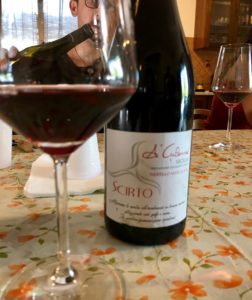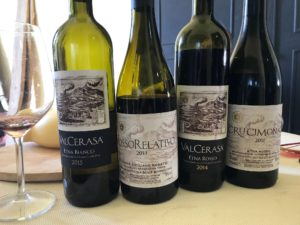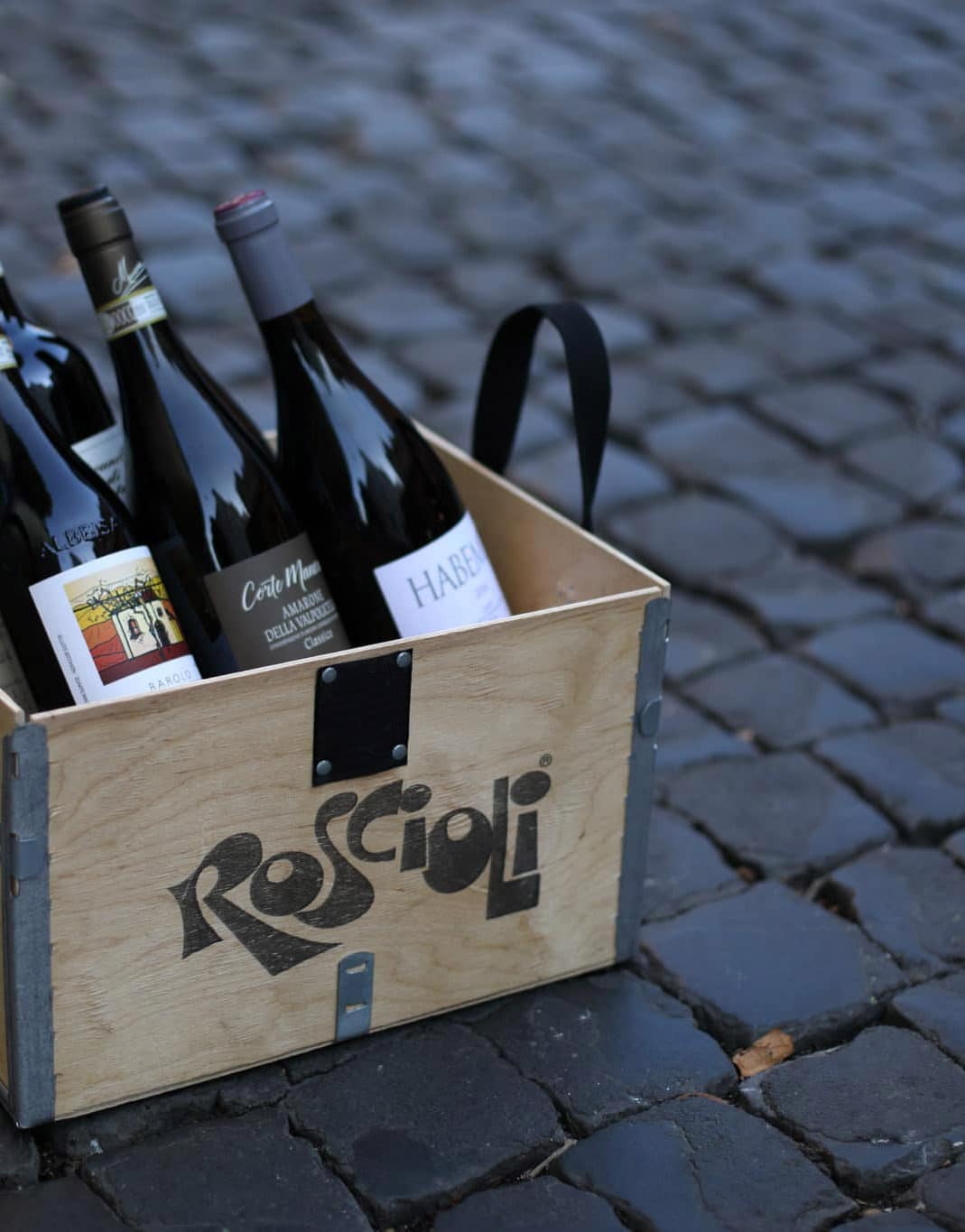 It was my favorite scene from Willy Wonka when I was a child. The scene where they enter into the chocolate factory after that terror of a boat ride, to find a paradise of all the most sweet, succulent, edible delights. Everyone galavanting around savoring and sampling the finger-licking goodies, ravaging and shaking trees of candies and not afraid to get their hands a little messy to get a taste of whipped cream, frosting and liquid chocolate. This was me in Sicily.
It was my favorite scene from Willy Wonka when I was a child. The scene where they enter into the chocolate factory after that terror of a boat ride, to find a paradise of all the most sweet, succulent, edible delights. Everyone galavanting around savoring and sampling the finger-licking goodies, ravaging and shaking trees of candies and not afraid to get their hands a little messy to get a taste of whipped cream, frosting and liquid chocolate. This was me in Sicily.
Sicily is a land of deliciousness, where you find fruit trees of the most sweet, perfectly ripe gelsi (mulberries), apricots, plums, peaches, pomegranates and more. Crimson-magenta pink colored watermelons line the streets of every town, along with huge roasted sweet onions (cipolle di Giarratana) and the crunchy, sweet Pachino tomatoes remind you that tomatoes are indeed a fruit. Here you are surrounded by the salty, Mediterranean seas, with a copious diversity of fish, mussels, clams, and shrimps and more which all find their ways to fish markets each morning. I don’t usually like anchovies, sardines and tuna fish (mostly speaking of Starkist or Chicken of the Sea), but found myself unable to stop eating all these things there.
And don’t even get me started on the almonds, pistachios and my daily breakfast routine of a cornetto or brioche stuffed with sweetened ricotta or accompanied by a trifecta of granita – typically gelsi, mandorle, pesca (mulberry, almond, peach), and a canolo or piece of cassata. Italy defies all rules for diets, and reminds you that a blissful breakfast sets up the happiness for your day to come. Any vegans would die here, as the almond milk is truly something else here, and soils and sun make for the most nutritious and delicious fruits and vegetables. Mmmm…the arancini di ragu – fried, savory rice balls…caponata, capers, tuna…the list doesn’t end.
And I could write about the foods for another 3 pages, but there is something bigger that you understand in this land, which anyone studying wine who wants to understand the word ‘terroir’ should experience. Sicily is defined by terroir. Every wine I sipped immediately transported me out of the cellar and outdoors onto their land, climbing the volcano Mt. Etna, strolling the beach with the salty sea breezes, or to the anchovy, and iodine rich smells of the open fish markets.
The incredibly well done, vin-du-garage wines at Scirto take you to the polar opposite end of the spectrum of your fruity Napa Cabernet and give you the impression that you are licking a volcanic rock.
The wines are robust and light at the same time with a beautiful minerality, light in weight but grippy with fine tannins, coming from vines that are nearly 100 years old. Val Cerasa also was a stand out winery in Etna, making a Carricante, Nerello Mascalese/Cappuccio and even a rose of Nerello Mascalese, which was minerally and smoky and the perfect pairing to the smoking volcano in our background.
 Cantina Marabino, in the southern town of Noto, was our last stop. These wines we serve every night, and have for nearly 4 years, because he is probably the best producers of Nero d’Avola that we have found. Every night we ask our guests impressions of the wines, and are reminded that everyone can be a sommelier as they describe this wine with aromas of cherries, earth, iodine, and sardines. This wine gives me a madeleine moment, and brings me straight back to the fish market of Catania with the smells and flavors of the dry, salty sardines I couldn’t stop eating. We walked his eco-paradise of a biodynamic property, which is uniquely green in a region of scorched, golden hills from the pervasive sun and heat, and heard of all the ways he is able to bring his land into harmony and balance, not requiring him to use pesticides and fertilizers. The vineyard position also gives him fresh cross-breezes from two seas to balance the abundance of sunlight, which you even taste in his wines.
Cantina Marabino, in the southern town of Noto, was our last stop. These wines we serve every night, and have for nearly 4 years, because he is probably the best producers of Nero d’Avola that we have found. Every night we ask our guests impressions of the wines, and are reminded that everyone can be a sommelier as they describe this wine with aromas of cherries, earth, iodine, and sardines. This wine gives me a madeleine moment, and brings me straight back to the fish market of Catania with the smells and flavors of the dry, salty sardines I couldn’t stop eating. We walked his eco-paradise of a biodynamic property, which is uniquely green in a region of scorched, golden hills from the pervasive sun and heat, and heard of all the ways he is able to bring his land into harmony and balance, not requiring him to use pesticides and fertilizers. The vineyard position also gives him fresh cross-breezes from two seas to balance the abundance of sunlight, which you even taste in his wines.
By recycling water, he brings animals, birds and insects to his property. By planting a diversity of fruit trees in his vineyards, he brings a balance. Everything is in balance there, just as are his wines. I even smuggled some santolina (a yellow flower reminiscent of thyme and Mediterranean herbs) from his property to allow our guests to smell as they drank his wine, as Muscatedda is perfumed just like his land.
Nothing is better than having a madeleine moment while you sip and swirl your wine, getting lost in a tea cup of memories, places and time. This is why I love wine. And to me, this is wine, the truly terroir-driven wine, with a fingerprint of the land – assuming the winemaker knows how to ‘keep his hands in his pockets’ as Ivan Giuliani of Terenzuola likes to say.
Have you had this experience with a wine? I would love to know which one and where it transported you to. Leave a comment and share your stories with us.
—
 SEI IN ITALIA? CLICCA QUI
SEI IN ITALIA? CLICCA QUI 

